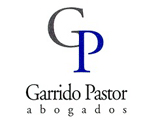The IPRGROUPSCANTM
To link or not to link. (“Svensson” case)
2015-01-30
This ECJ Judgment of 13 February 2014 (case C-466/12) deals with the following case: Two journalists who wrote press articles published on a newspaper’s web page, without any restriction whatsoever, filed a complaint against an undertaking called Retriever Sverige (RS), that manages a webpage providing its customers with lists of clickable links redirecting users to articles published on other web pages. The question is: does this constitute communication to the public?
Any act of communication of a work of art to the public must be authorized by the copyright holder (Article 3.1 Directive). Two elements stem from this: (1) “act of communication” (of a work of art) and (2) to a “public”.
As regards the former, an “act of communication” must be interpreted in the broadest meaning of the word in order to assure enhanced protection of copyright holders. For these purposes, making the work of art available to a public such that those who wish to access it may do so, but whether or not such persons do access it is irrelevant. Therefore, the hyperlinks in this case did constitute making the work of art available to the public and, accordingly, acts of communication.
As regards the second element, “effective communication to a public” must be understood as an undetermined though considerable number of potential recipients. In short, RS made a communication to the public.
However, since the case involves public communication of the same works of art in the same technical means (the Internet), it should be directed at a new public, that is to say, at a public that was not taken into account by the copyright holders when they authorized the initial communication to the public. The home page did not have any means of restricting access: all Internet users could freely consult the information. Therefore, since the home page and hyperlink could be freely accessed, the potential recipients are the same. The ECJ understands that if the clickable link allowed avoiding restriction measures aimed at limiting access to the page to subscribers, there is a new public, and in such case said communication to the public would require authorization from holders.
However, the Directive must be interpreted as meaning that “the provision, on a website, of clickable links to protected works freely accessible on another website does not constitute an act of communication to the public”.
Files: